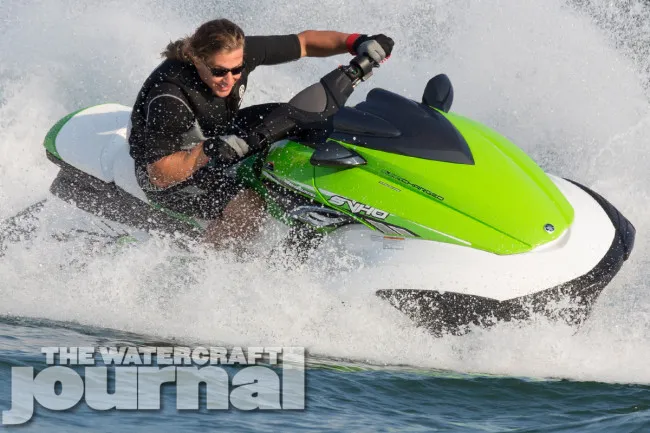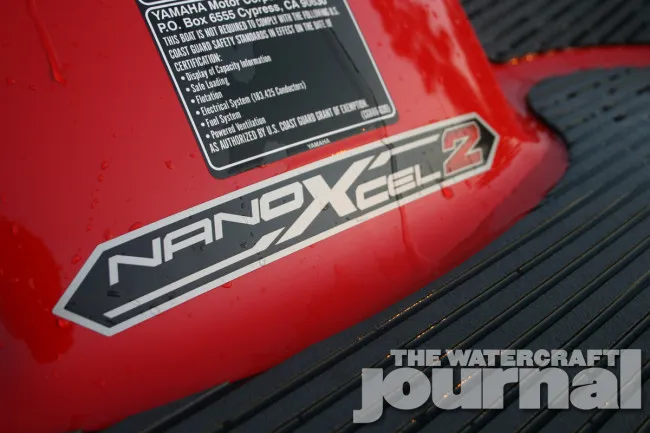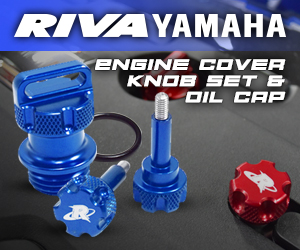“If it ain’t broke, don’t fix it,” the old adage goes and frankly, we at The Watercraft Journal were feeling a little bit the same when we first heard the news that Yamaha would be retiring the FZ Series WaveRunners this coming September. It’s difficult to imagine the performance watercraft landscape without Yamaha’s FZ Series being there. Since it’s introduction in 2008, the FZ models (FZR and FZS) have been mainstays of the closed course circuit.
And most importantly, the FZ models are a massive success. Not only has Yamaha maintained an almost unnatural dominance in both national venues (the Pro Watercross Tour and AquaX series, respectively), and the IJSBA World Finals, Thailand King’s Cup and elsewhere abroad; but the models are dealership favorites, selling the two- and three-seaters by the bushel. But in keeping with the typical lifespan of such things, 8 years is a long time for a performance hull to carry on markedly unchanged.
Yes, the advent of the SVHO did increase the FZ’s pump to 160mm and dramatically improved the 1.8 liter’s boost, cooling and overall performance output, and even the application of Yamaha’s lighter NanaXcel2 bonding material shaved off over 30 pounds was a significant boon, but again, the hull design and deck remained the same. And as Yamaha is never wont to let the grass grow beneath their feet, this retirement has been in the works for several years now.
Back in August of 2014, Yamaha’s own Scott Watkins expertly predicted this when he introduced The Watercraft Journal to the then-completely-new VX Series, stating, “This hull was developed to replace both the FZ and FX models if we had to; to perform as well and accept the drivetrains if necessary.” While the former multi-World Champion and current Yamaha Product Manager was pointedly explaining the “doomsday contingency scenario” happening during the height of the Obama Recession, the groundwork for a new performance craft was being laid.
Sharing much more in common with the new VX Series than the FX series, the new hull design will retain much of its championship-winning FZ chine and rocker design but blend in a healthy dose of DNA from the current VXR. As the outgoing FZ shares the same deck as the current FX, the new machine is expected to share that with the current (and noticeably larger over the pre-2015) VX Series.
Only .8-inches separate the length from the current VXR from the FZR (131.9 to 132.7-inches), with a scant .4-inches measured between the 48-inches width of the VXR and the 48.4-inches of the FZR, making speculation of a larger-than-the-VXR doubtful, that is, unless the new craft is expected to outgrow the current FZ. Rather, the two key dimensional differences in the craft are total height and weight. The VXR tips the scales at 767-pounds with the FZR nearly 25-pounds heavier at 791. And the new craft is expected to have a lower center of gravity than the outgoing 45.7-inches total height.
Of course, the big question is power. As it stands, the current Super Vortex High Output (SVHO) performance drivetrain is not only exceptionally potent, capable and durable (“They already updated [the engine for] 2016 to a very beefy double row cam chain,” our source explained), but more than worthy to power the new runabout as-is. Yet, speculation is the Internet’s expertise, and we’ve got some pretty solid leads that Yamaha is not looking to leave anything on the table for 2017.
Expect the new Yamaha to come up in power. No, this doesn’t mean that Yamaha will be falling into the trappings of the ongoing horsepower wars, but it does mean that there are some very cool tricks hidden up the manufacturer’s sleeves. With Kawasaki at 310 horsepower and Sea-Doo pushing 300, Yamaha is in no mood to lose its grip on its crown as a championship-winning craft. And to do so, Yamaha’s going to have to turn up the wick. “[It’s] very easy to make that happen,” our source hinted.
Our source noted the inadequacy of the stock SVHO intercooler, and how the addition of a larger volume intercooler could easily push the new supercharged craft to 300-horsepower. “Of course, a cooler, denser air charge would require that the fuel curve be changed and more ignition timing be added,” our source explained, hinting towards a new ECU tune. “The 8 vane pump is great,” they continued, “However, [Yamaha] will run a higher pitch impeller to handle the increase in power.”
Oh, and we almost left out our favorite part: Word is that the name “GP1800R” is being thrown around. So, although we’re sad to see the FZ Series go – if it actually happens (wink. wink), we look forward to what the future holds with the potential for a 300-horsepower SVHO propelling an entirely new hull from Yamaha WaveRunners, that is, if our sources are correct (“It will be coming for 2017, I can assure you that.”), and as last year’s near exact prediction of the 300 Series Sea-Doos illustrates, they usually are.












